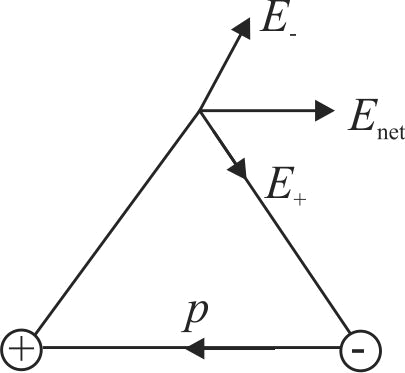358138 Two point charges of \(5\mu C\,\,\,{\mathop{\rm and}\nolimits} \,\,\, - 5\mu C\) are separated by a distance of \(10\,\mathop A\limits^ \circ \), \(A\) point \(B\) is at a distance of 10 \(cm\) from the midpoint and on the perpendicular bisector of the line joining the two charges. The electric field at \(B \) will be
358138 Two point charges of \(5\mu C\,\,\,{\mathop{\rm and}\nolimits} \,\,\, - 5\mu C\) are separated by a distance of \(10\,\mathop A\limits^ \circ \), \(A\) point \(B\) is at a distance of 10 \(cm\) from the midpoint and on the perpendicular bisector of the line joining the two charges. The electric field at \(B \) will be
358138 Two point charges of \(5\mu C\,\,\,{\mathop{\rm and}\nolimits} \,\,\, - 5\mu C\) are separated by a distance of \(10\,\mathop A\limits^ \circ \), \(A\) point \(B\) is at a distance of 10 \(cm\) from the midpoint and on the perpendicular bisector of the line joining the two charges. The electric field at \(B \) will be
358138 Two point charges of \(5\mu C\,\,\,{\mathop{\rm and}\nolimits} \,\,\, - 5\mu C\) are separated by a distance of \(10\,\mathop A\limits^ \circ \), \(A\) point \(B\) is at a distance of 10 \(cm\) from the midpoint and on the perpendicular bisector of the line joining the two charges. The electric field at \(B \) will be




